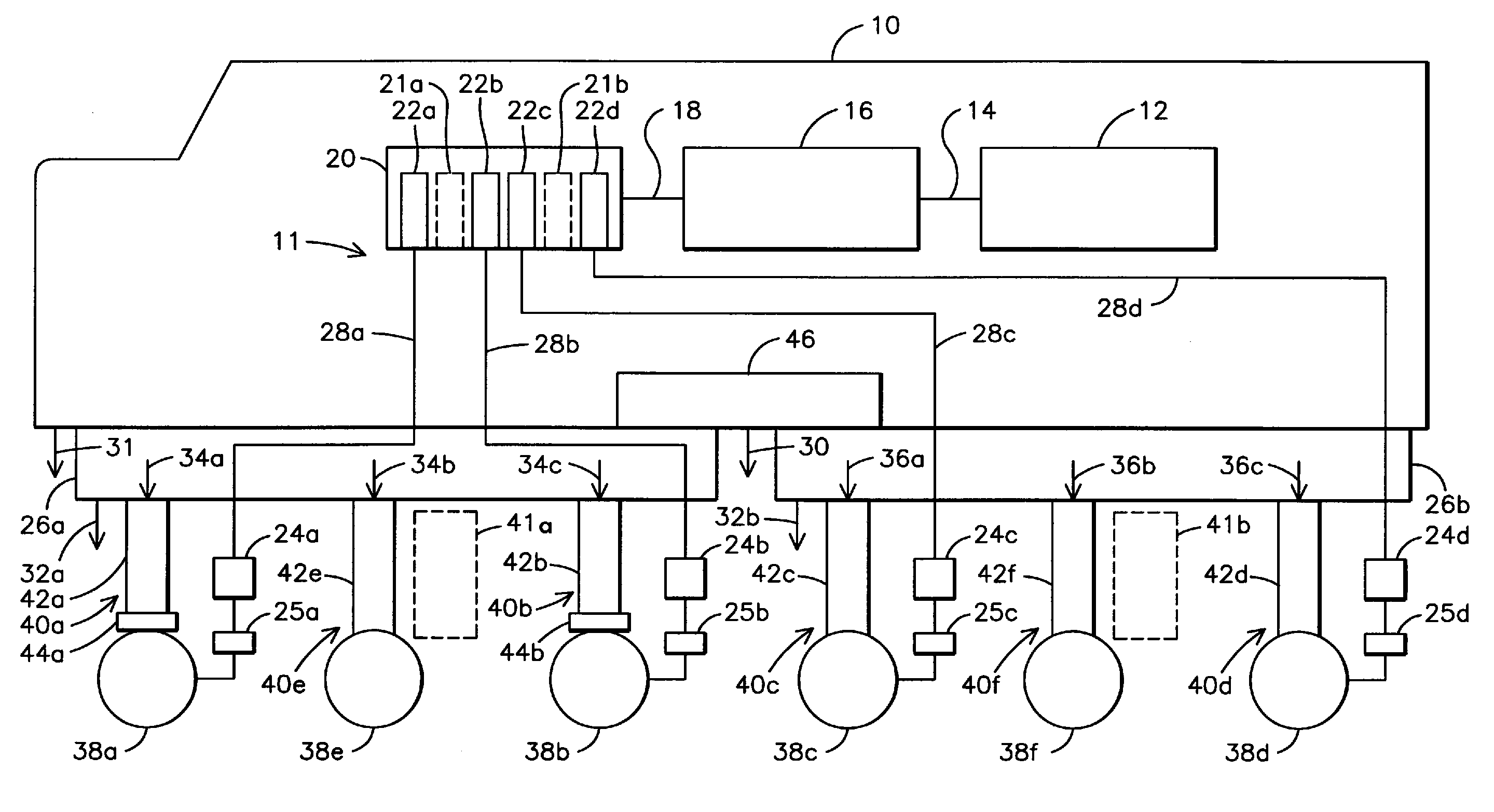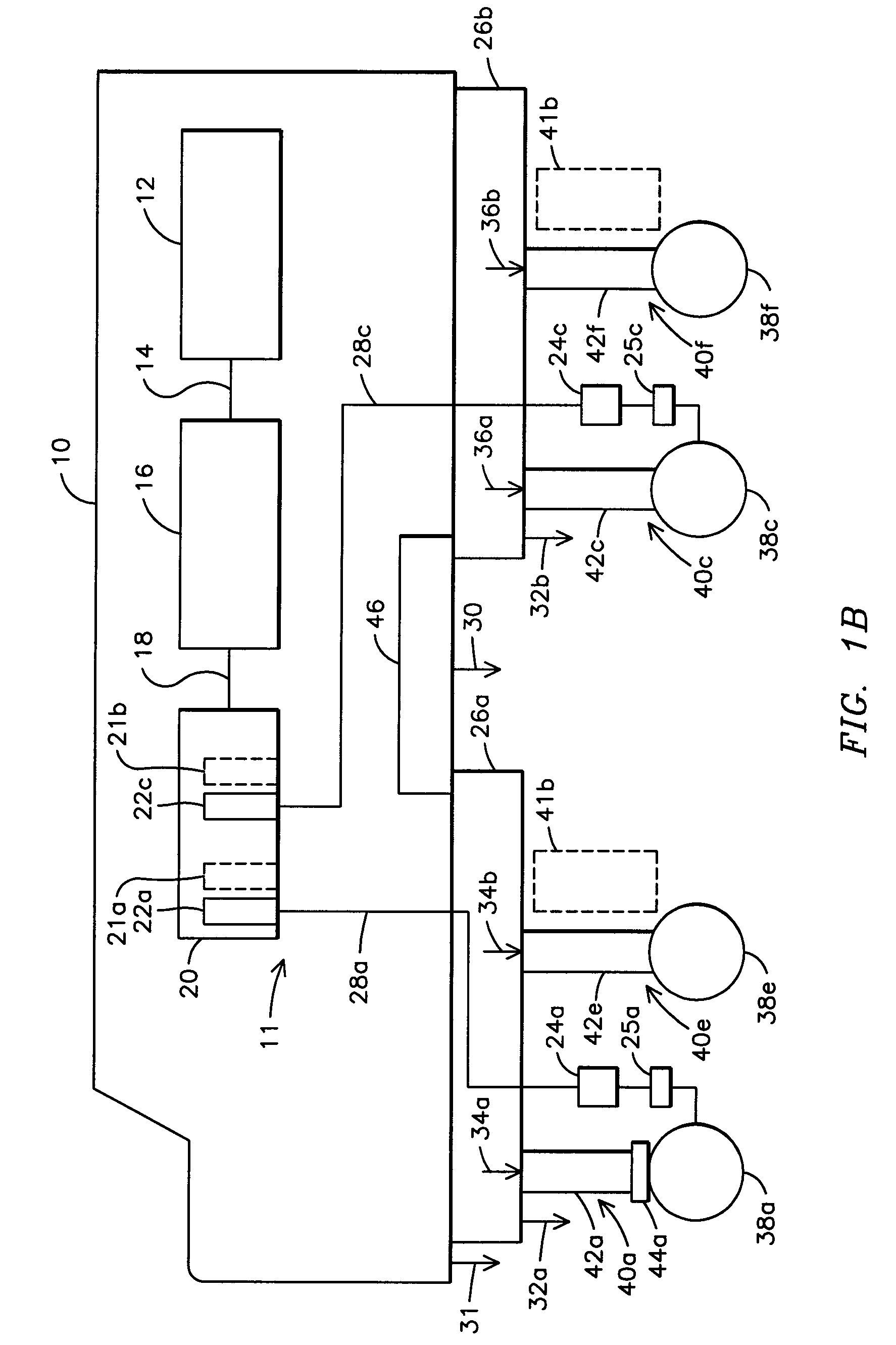System and Method for Modification of a Baseline Ballast Arrangement of a Locomotive
a baseline ballast and locomotive technology, applied in the field of locomotives, can solve the problems of increasing the tractive effort that it can generate at a certain speed, the ongoing cost of maintaining and repairing the locomotive, and not meeting the hauling needs of the railroad in the futur
- Summary
- Abstract
- Description
- Claims
- Application Information
AI Technical Summary
Benefits of technology
Problems solved by technology
Method used
Image
Examples
Embodiment Construction
[0016]Reference will now be made in detail to the embodiments consistent with the invention, examples of which are illustrated in the accompanying drawings. Wherever possible, the same reference numerals are used throughout the drawings and refer to the same or like parts.
[0017]FIG. 1A is a schematic block diagram of an example embodiment of a reconfigurable locomotive 10. The locomotive 10 may include a traction system 11 having a diesel internal combustion engine 12 coupled via shaft 14 to drive a traction alternator 16 for producing AC electrical power 18. The AC electrical power 18 may be provided to a motor controller 20 that may include a one or more inverters 22a-22d. Inverters 22a-22d may be configured for providing electrical power to, and for controlling respective traction motors 24a-24d located in trucks 26a-26b. The inverters 22a-22d may be electrically coupled to the respective traction motors 24a-24d with wiring harnesses 28a-28b. In an aspect of the invention, the tr...
PUM
 Login to View More
Login to View More Abstract
Description
Claims
Application Information
 Login to View More
Login to View More - R&D
- Intellectual Property
- Life Sciences
- Materials
- Tech Scout
- Unparalleled Data Quality
- Higher Quality Content
- 60% Fewer Hallucinations
Browse by: Latest US Patents, China's latest patents, Technical Efficacy Thesaurus, Application Domain, Technology Topic, Popular Technical Reports.
© 2025 PatSnap. All rights reserved.Legal|Privacy policy|Modern Slavery Act Transparency Statement|Sitemap|About US| Contact US: help@patsnap.com



